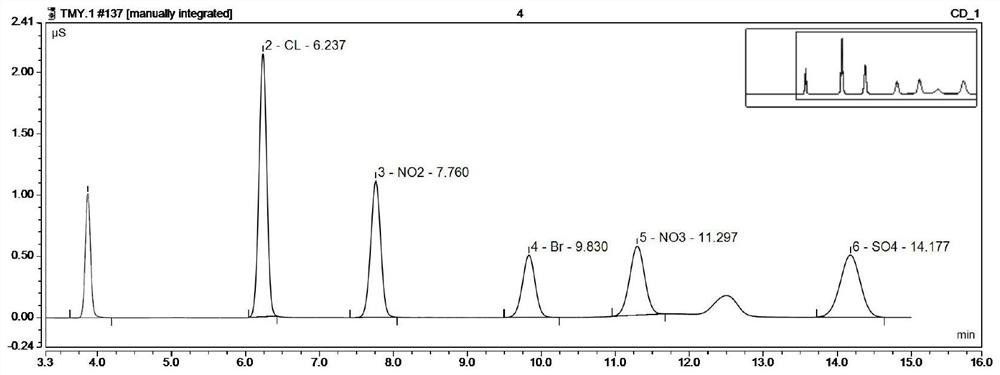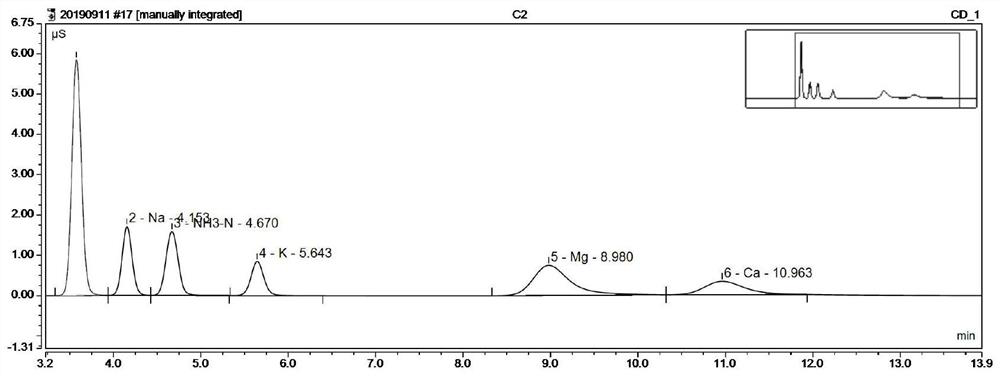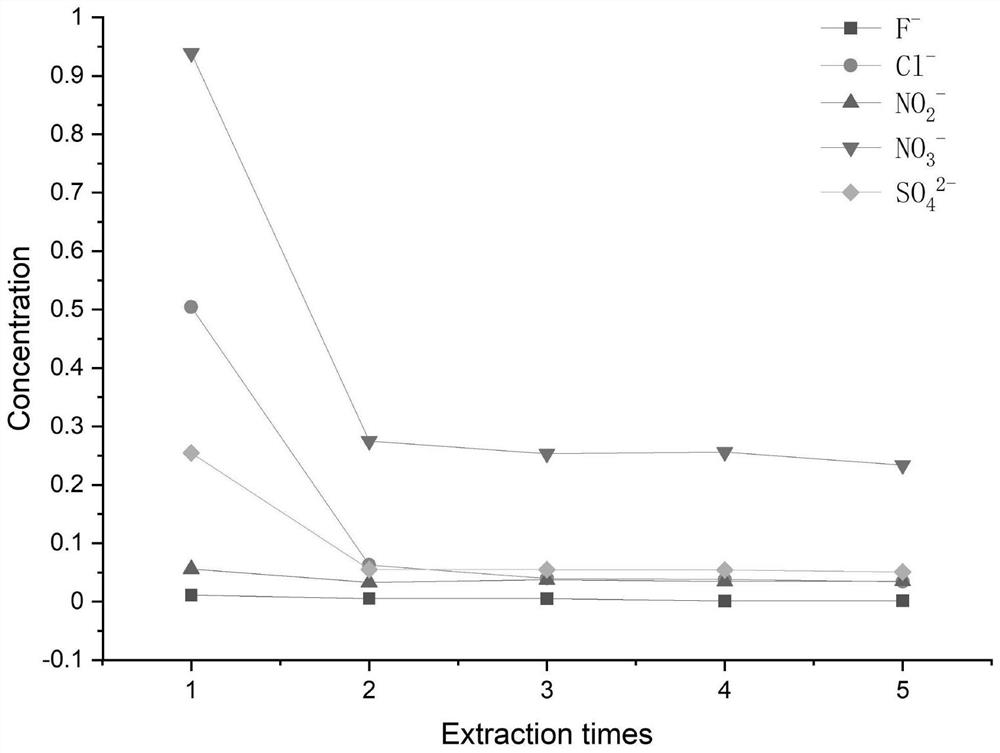Method for simultaneously detecting content of water-soluble anions and cations in atmospheric particulate matters through rapid solvent extraction-ion chromatography
A technology of atmospheric particulate matter and ion chromatography, which is applied in the field of rapid solvent extraction-ion chromatography to simultaneously detect the content of water-soluble anions and cations in atmospheric particles, which can solve the problems of long-term ultrasonic extraction process environmental impurities and achieve high accuracy , Less solvent consumption, good reproducible effect
- Summary
- Abstract
- Description
- Claims
- Application Information
AI Technical Summary
Problems solved by technology
Method used
Image
Examples
Embodiment 1
[0034] Example 1 Simultaneous analysis of 12 water-soluble anions and cations by fast solvent extraction ion chromatography
[0035] 1. Sample collection and pretreatment
[0036] Before sampling, soak the quartz fiber filter membrane in ultrapure water for 20-30min, twice. Then put it into an oven to dry, and then put it into a desiccator to cool and balance for 24 hours. Take the above filter membrane and install it in a particle sampler. In the dust sampling mode, the flow rate is set to 100L / min, and the sampling time is 12h.
[0037] After the sampled quartz fiber filter membrane is placed in a desiccator to balance for 24 hours, use clean ceramic scissors to cut the filter membrane along the diameter direction, cut the filter membrane into a fan shape, take 1 / 4 piece and put it into a 33mL stainless steel extraction pool . Under the set mode, the temperature is 80 degrees centigrade, the extraction pressure is 1500 psi, and the extraction is performed twice, 5 minutes ...
Embodiment 2
[0043] Embodiment 2 precision experiment
[0044] Take low, medium and high concentrations of 6 kinds of anion mixed standard solutions and 6 kinds of cation standard solutions dropwise on the filter membrane after sampling pretreatment, after sample pretreatment, analyze under analytical chromatographic conditions, each Each concentration was paralleled 7 times, and the relative standard deviation (RSD) was calculated, as shown in Table 2.
[0045] Table 2 Water-soluble ion precision test results
[0046]
[0047]
[0048] It can be seen from the table that the anion standard deviations of low, medium and high concentrations are between 0.0019 and 0.1264mg / L, and the relative standard deviations are between 0.7% and 19.7%. - In addition, the precision of each group is relatively good. The standard deviation of cations is between 0.0081~0.0.2397mg / L, the relative standard deviation is between 0.7%~11.7%, and the precision of each group is relatively good.
Embodiment 3
[0049] Embodiment three standard addition recovery experiment
[0050] According to step 1, pre-sampling was carried out on the filter membrane, and the mixed standard solutions equivalent to 0.1mg / L, 2mg / L and 4mg / L after extraction were added dropwise respectively as the standard addition amount for the recovery test. The results are shown in Table 3.
[0051] Table 3 water-soluble ion recovery experimental results
[0052]
[0053] As can be seen from the table: the average recovery of 12 kinds of anions and cations is between 73.8% and 128.3%, except for Br - The external recoveries were all in the range of 70%-120%. The precision and recovery rate of standard addition show that the data measured by this method are more accurate and reliable.
PUM
 Login to View More
Login to View More Abstract
Description
Claims
Application Information
 Login to View More
Login to View More - Generate Ideas
- Intellectual Property
- Life Sciences
- Materials
- Tech Scout
- Unparalleled Data Quality
- Higher Quality Content
- 60% Fewer Hallucinations
Browse by: Latest US Patents, China's latest patents, Technical Efficacy Thesaurus, Application Domain, Technology Topic, Popular Technical Reports.
© 2025 PatSnap. All rights reserved.Legal|Privacy policy|Modern Slavery Act Transparency Statement|Sitemap|About US| Contact US: help@patsnap.com



